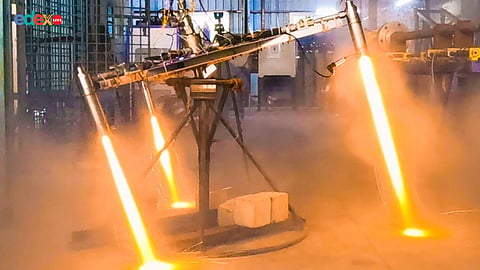

CHENNAI: Indian Institute of Technology Madras (IIT Madras) researchers have taken India one step closer to developing a Vertical Take-off and Landing (VTOL) Aircraft and Unmanned Aerial Vehicle (UAV) with Hybrid Rocket Thrusters.
In a experiment that combined a real-time hybrid rocket thruster with a virtual simulation, the researchers achieved the necessary velocity for ‘soft landing’, a crucial feature for all craft ranging from planetary landing of unmanned or manned exploration module to terrestrial landing of a VTOL aircraft.
Touchdown velocity is an important parameter to ensure safe vertical landings.
Researchers studied the feasibility of using the hybrid rocket motor for vertical landing platforms as they are less complicated and safe compared to liquid engines.
Moreover, hybrid rocket systems are gaining popularity due to their inherent safety and throttling capabilities, apart from the possibility of combining advantages of liquid and solid rocket engines.
Currently, VTOL systems are complex and needs high-maintenance.
Therefore, the researchers conceived the concept of a hybrid rocket thruster-powered platform as part of a system development study to bring out an effective propulsion unit for achieving VTOL in aircraft and UAVs.
The findings of this research were published in a paper, co-authored by PA Ramakrishna, Dr. Joel George Manathara and Mr. Anandu Bhadran of IIT Madras, in the reputed peer-reviewed International Journal of Aeronautical and Space Sciences (https://doi.org/10.1007/s42405-024-00810-9).
A contribution is the development of a hybrid rocket fuel that needs only compressed air as the oxidizer.
This makes VTOL systems easier to integrate with aerospace vehicles, especially in scenarios where compressed air is readily available.
